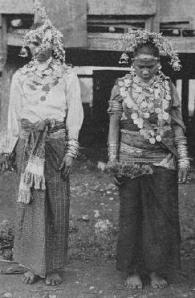Didong The Traditional Art of Gayo

Communities in Aceh Tengah Gayo live in the mountains or plateaus. They still preserve the artistic culture of one nation is Didong. Didong is a traditional art that is very popular and desired by Gayo society. The artist was called with the title-ceh ceh Didong. There are several names Didong famous players, including Lakiki CEH, CEH To’et, Daman CEH, CEH Ibrahim Kadir, Lakiki Ujang CEH, CEH Ucak, Seven CEH, CEH Session Temas Idris, and CEH Abd Rauf.
Didong a performance art done by the men in groups (usually numbering 15 people), with free expression, as he sat cross-legged or standing, stamping his feet. They recite verses Gayo language with melodious voice, while manabuh drum, pillow or saucepan and clapped as varied, so that the sound and motion create a beautiful and interesting.
B. Privileges
Traditional performing arts that became the pride of Gayo society is able to survive today in the midst of technological developments and the influence of westernization. People do not get enough of watching ceh-ceh Didong berdidong in almost every night the week. Was done to show the whole night (from evening until dawn).
Poems are recited by the power of fusion art configuration of motion, literature and sound like “voodoo” the audience to “drift” and continue to listen to the social and religious reflection Continue reading “Didong”
